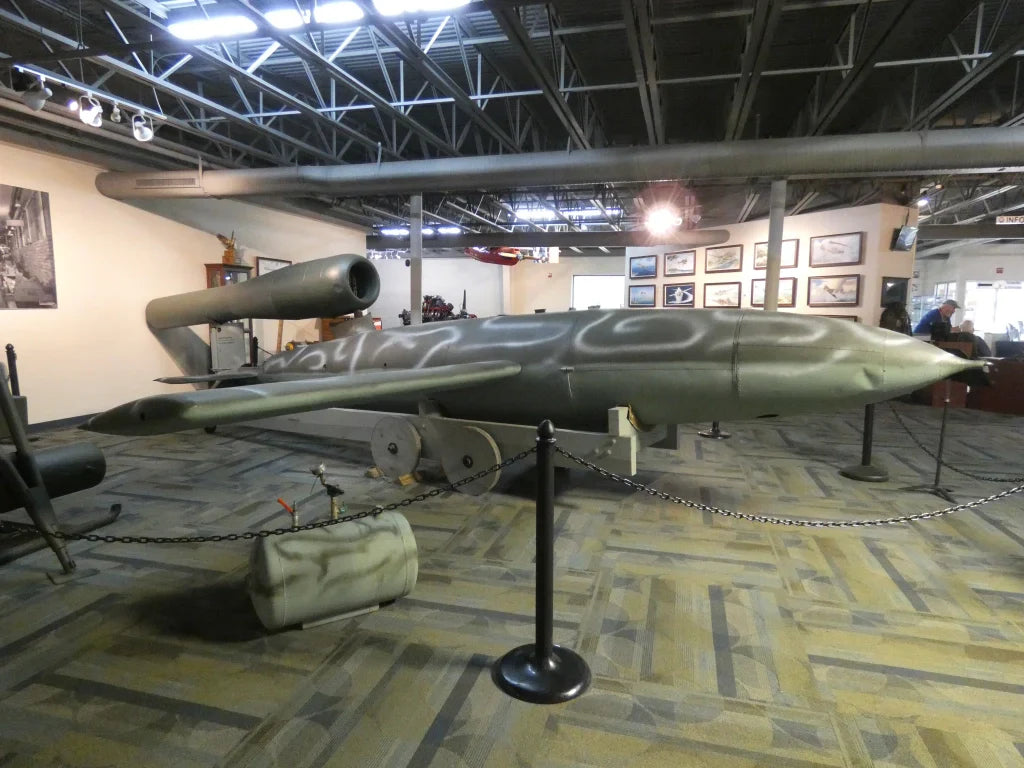Throughout World War II, several technological advancements emerged that played pivotal roles in shaping the course of the conflict. Among these, two names often spark curiosity – the Doodlebug and the V-2 Rocket. At first glance, their general purpose might seem similar, but a closer inspection reveals intricate differences in design and impact.
Origins and Design
The Doodlebug, more formally known as the V-1 Flying Bomb, was nicknamed by the British due to its distinctive droning noise. This early cruise missile, developed by Nazi Germany, boasted a relatively simple pulse jet design. Pulled into the sky by a catapult and guided by an autopilot system, its buzzing sound became synonymous with dread. When the droning ceased, it indicated the V-1’s descent, inevitably culminating in a devastating explosion.
In contrast, the V-2 Rocket, christened the A-4 by its German creators, was a true technological marvel of its era. As the world’s first long-range guided ballistic missile, its design incorporated advanced principles of rocketry. The V-2 stood tall, with an elongated structure powered by liquid oxygen and ethanol. Unlike the V-1, its approach was silent, striking without warning from the stratosphere. A harbinger of modern space exploration, the V-2 reached altitudes where the curvature of the Earth became apparent.
Operational Deployment
Both weapons, in their essence, were instruments of terror, yet their deployment strategies varied. The Doodlebug was primarily launched towards London and other southern English cities. Besides causing material destruction, its purpose was psychological warfare. Its buzzing sound was intended to instill fear in the hearts of the British populace.
The V-2, due to its increased range and capability, had a broader geographical canvas. Targets spanned from London to Antwerp and even reached as far as Liège in Belgium. Given its supersonic descent, defense against the V-2 was practically impossible, making its psychological impact even more profound.
Impact and Legacy
While both weapons were potent, their overall impacts differed. The V-1, being more rudimentary, saw higher interception rates. British defenses, learning and adapting, managed to shoot down a significant number of these flying bombs before they could reach their intended targets. Innovations like barrage balloons and the rapid development of ground-based anti-aircraft solutions stemmed the tide of the Doodlebug’s devastation.
The V-2, on the other hand, stood as a testament to what future warfare might encompass. Its legacy wasn’t confined to its wartime use. Post-war, both the United States and the Soviet Union spirited away V-2 components and experts, integrating them into nascent space and missile programs. In essence, the V-2 Rocket laid the groundwork for future ICBMs and even early space exploration endeavors.
The tapestry of World War II is woven with threads of innovation, desperation, and human endeavor. Both the Doodlebug and the V-2 Rocket serve as stark reminders of mankind’s dualistic capability – to create instruments of both destruction and exploration. While their immediate purpose was warfare, their legacies have impacted technological and scientific advancements. The nuanced distinctions between these two weapons highlight the rapid technological progression of that era, an evolution driven by the difficulties of a world at war.
For more insights into the V-2 Rocket and other important military aircraft, visit Aces In Action. Here, you’ll find a V2 Rocket relic plaque by artist Craig Tinder that illustrates Germany’s V-2 rocket unleashed in 1944 and was the first man-made object to reach suborbital flight. The relic plaque even includes a piece of a fragment of the V-2 rocket that exploded and was recovered from the site near Chigwell, making it a unique piece of history!
WWII German V-2 Rocket Relic Plaque by Artist Craig Tinder
On March 2, 1945, 20 German soldiers and engineers of the Artillery Regiment 1. 902 assembled at the Hock van Holland V-2 Missile Launch site in Holland to prepare for 22 V-2 launches against London that day. Freshly supplied from the local railway, the rocket was filled with liquid propellant and was prepared for launch. At precisely 5:35 am, the launch control officer yelled the final command, “Hauptstufe!” and the rocket roared towards its target.
To purchase or see similar items, visit here.
Commissioned by Museums, Treasured by Collectors





Share:
Was the Me 262 Superior to the P-51? A Deep Dive into Aerial Mastery
Why Did the Stuka Scream? The Acoustic Terror of World War II